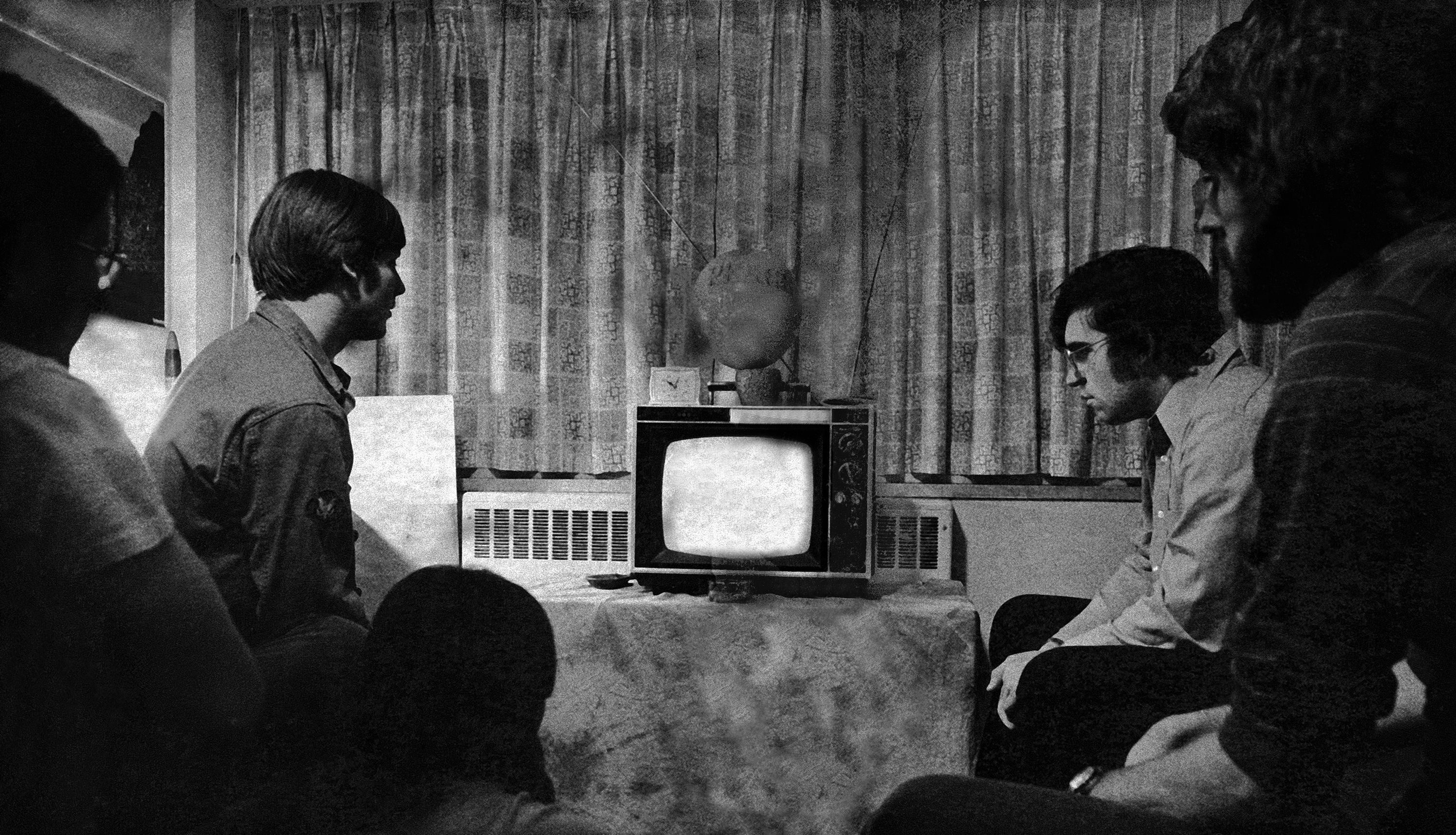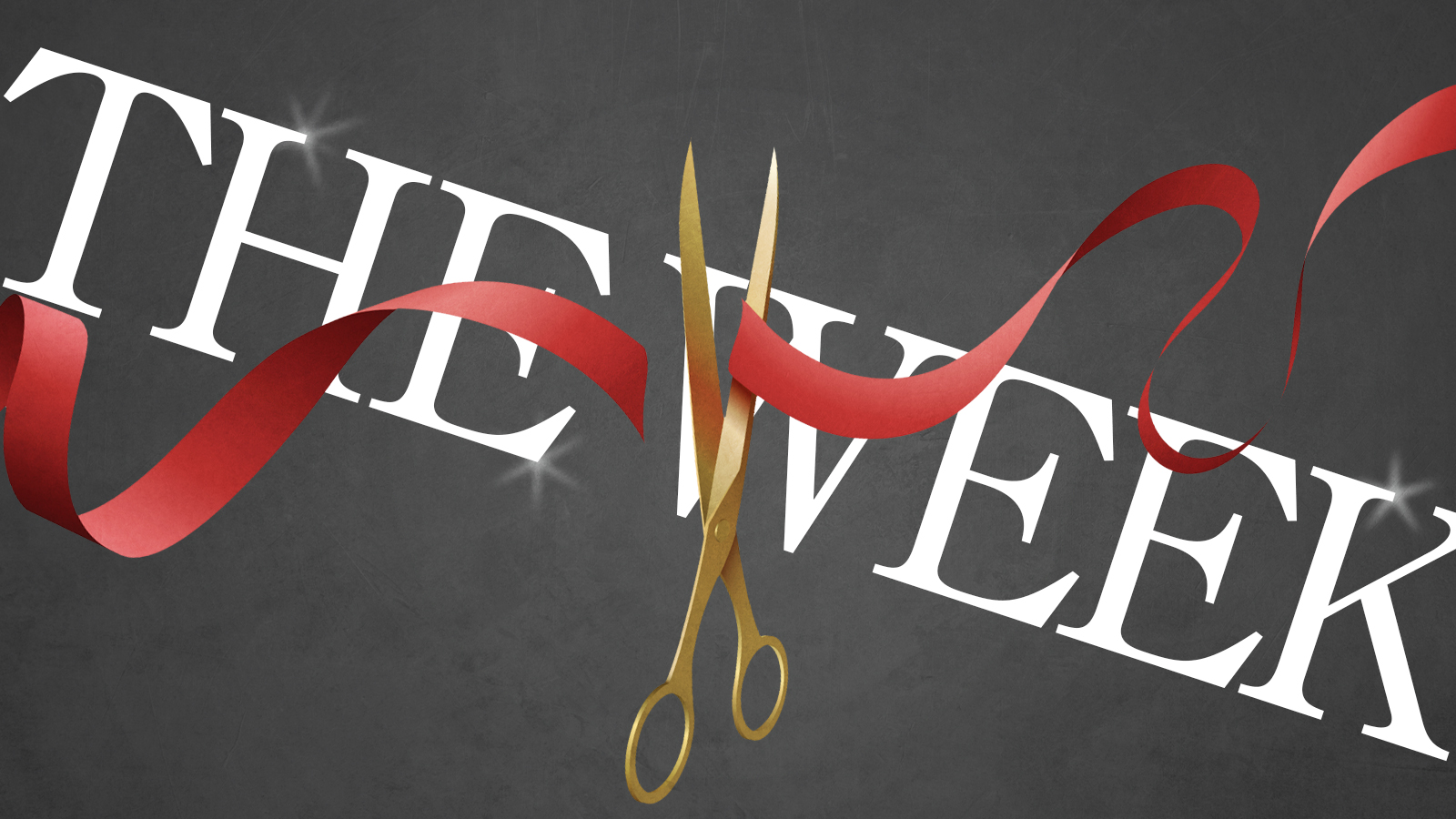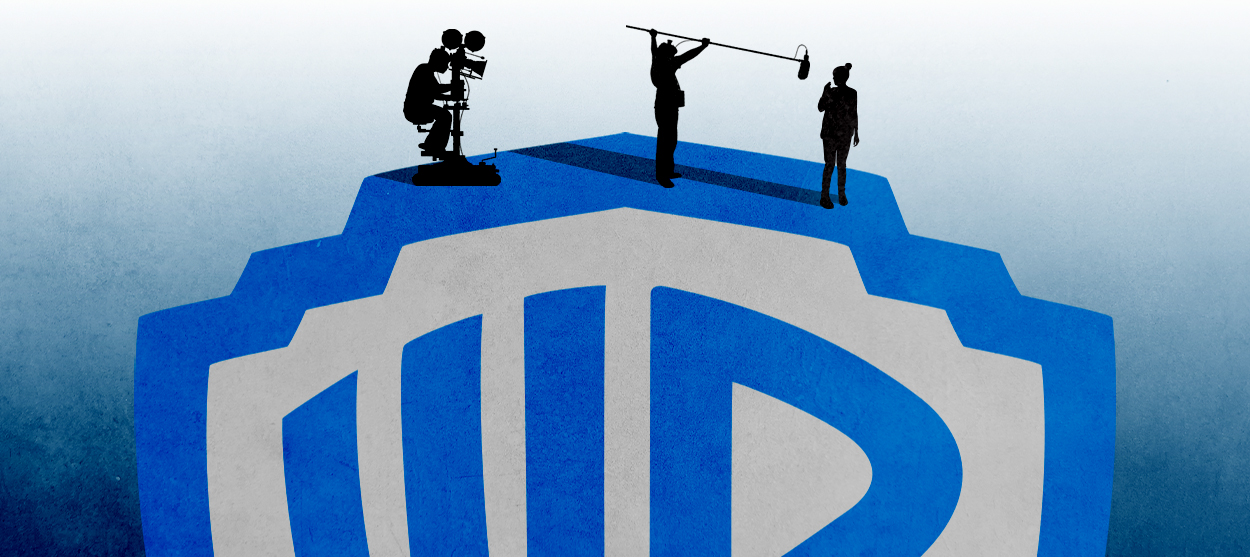The 45-year-old book that explains TV today
On the prophetic relevance of Television: The Business Behind the Box


Read just about any analysis of the television industry in 2016 and you'll see a lot of worrying about a business model that may be unsustainable. There are too many shows. Audiences are too fragmented. Young people aren't watching TV. Stars cost too much, and don't guarantee success. And nobody can figure out whether Nielsen ratings even matter any more.
But guess what? Look back at what people were saying about television 45 years ago and the concerns aren't that different.
January 1971 is often considered a watershed moment in TV history. CBS had just debuted All in the Family, which helped finally open TV up to more mature, relevant subject matter — and in turn brought back some of a younger audience that critics believed had permanently fled the medium.
The Week
Escape your echo chamber. Get the facts behind the news, plus analysis from multiple perspectives.

Sign up for The Week's Free Newsletters
From our morning news briefing to a weekly Good News Newsletter, get the best of The Week delivered directly to your inbox.
From our morning news briefing to a weekly Good News Newsletter, get the best of The Week delivered directly to your inbox.
As the editor of Variety's television section at the time, Les Brown watched CBS's big gamble play out as it happened. Brown was fascinated by how the industry as a whole was struggling to adapt to a rapidly changing society, and he summarized his observations in the 1971 book Television: The Business Behind the Box. As he put it in his introduction, "I set out in January 1970 to write on how the American television system works… [but] my experience was to chronicle not the average year I had expected, but a chaotic 12 months for the television industry, full of change and portents of greater upheavals ahead."
Those changes and portents continue to affect the TV business in 2016 — sometimes because of the way the networks ultimately adjusted and sometimes because of how they didn't. Here are eight ideas Brown wrote about in 1970 that's still relevant today:
1. Young people weren't watching.
At the start of the '70s, network executives were scratching their heads about how to re-engage the first generation that had been raised on their product. In an effort to secure a share of the older audience that tuned in every night, the networks had spent years stocking their lineups with shows too square to captivate the acid rock demographic. As a result, teens and young adults fled primetime, and according to Brown thought of TV as "the meretricious huckster of the plastic world they were rebelling against." Kids spent more time at the movies, seeing the wave of violent, sexually frank, and socially aware cinema that the "New Hollywood" was producing.
A free daily email with the biggest news stories of the day – and the best features from TheWeek.com
The networks couldn't run anything like those movies without running afoul of the FCC, so their big idea was to slap a youthful label on the same old cop and doc dramas. CBS had The Interns and Storefront Lawyers. ABC had The Mod Squad, The Young Lawyers, and The Young Rebels (about the young, scrappy, and hungry guerrillas of the American Revolutionary War). Aside from The Mod Squad — and that only briefly — none of these series caught on. Instead, the younger generation drifted back once producers genuinely started taking their lives and concerns seriously, with All in the Family and the shows that followed. This should be a lesson to every current network boss who seeks to pry millennials away from their cell phones just by stitching some shiny new hashtags into otherwise well-worn material.
2. Analysts argued over which numbers mattered.
One of the most entertaining chapters of Brown's book has to do with CBS program chief Mike Dann desperately trying to boost the network's overall viewership in the winter and spring of 1970 to squeak past NBC in the season's ratings race. Dann preempted middling shows left and right to air heavily promoted specials, artificially inflating CBS's audience. But after all that trouble, just as CBS was rapidly catching up to NBC, the latter's publicity department abruptly put out a press release claiming that since it had already aired most of its first-run programs for the year, the season was effectively over — and that NBC had come out on top.
NBC could get away with this because the whole idea of a "ratings race" was unofficial, with unwritten rules. Also, NBC could rightly tout that it was dominating in a demographic then known as "young marrieds" — meaning couples between the age of 18 and 49, who spent a lot of money to set up their households and raise their kids. This would be the beginning of an ongoing battle between the hair-splitters, who still carry on a weekly, quarterly, and yearly debates over whether the designation "most-watched" really means anything.
3. The push was on to squeeze in more commercials.
Just about any in-the-moment report on popular culture is going to reveal ideas and anecdotes that now seem quaint or ironic. In Television, Brown writes about the industry hand-wringing over the then-recent shift from 60-second to 30-second commercials, and how viewers suddenly complained of being bombarded with ads. This was at a time when half-hour shows were actually 26 minutes and hour-long shows ran 52 minutes — unlike today's 22 and 44 minute runtimes.
In one of the unintentionally funniest passages in Television, Brown describes an internal NBC proposal to start running promos for upcoming shows as a crawl at the bottom of the screen, like a news bulletin or weather alert. The idea was roundly mocked as ludicrous. But now we've gotten used to the "bugs" that clutter up the corners of our screens with pitches for something else to see.
4. Sports became a savior.
Maybe the most momentous event of the 1970-'71 TV season is mentioned just in passing by Brown, who at the time saw it more as an interesting experiment than as the future of television. Perennial third-place network ABC partnered with visionary NFL commissioner Pete Rozelle to put one pro football game a week in primetime. Though the sport was rising in popularity, the networks and their sponsors had set ideas about when the various segments of their audiences watched TV. Men were supposed to watch sports on weekend afternoons, while Monday nights were tailored for women, with a lot of advertising dollars spent to court moms and housewives as they began their weekly shopping.
Nevertheless, writing about the first-ever installment of Monday Night Football, Brown said, "Football, because it is an action game, an acting out of war, with form — violent, competitive, full of strategy, marked with surprise — [is] the consummate television show." Viewers agreed. MNF was a surprise hit, carving out weekday primetime as a viable slot for live sports, and soon touching off the still-raging bidding wars for broadcast rights.
5. Networks were skeptical about the value of diversity.
Writing further about the decisions made by network sports divisions, Brown said, "Golf receives more television exposure than some more popular sports… partly, one suspects, this is due to its being a favorite recreational activity of TV executives." Other sports didn't fare so well. Basketball was a hard sell to advertisers in 1970 because it "appealed to elements of society with which it was probably best not to associate his product." Along those same lines, periodically throughout Television Brown cites executives who say that while they could put black Americans in news specials or in supporting roles in "hard-hitting" dramas, leading roles in TV series were going to remain rare, because advertisers were convinced that minorities didn't have any money.
Brown provides a few counter-examples in his book. Sesame Street had just become a surprise hit for PBS. The Flip Wilson Show was huge on NBC. And NBC had scored good ratings with Julia, a sitcom that the network took a chance on primarily because it had to air something up against the ratings juggernaut that was The Red Skelton Hour (so why not get credit for being socially progressive while offering up its sacrificial lamb?).
Nowadays, the NBA is big business, and a list of the most popular contemporary TV shows would be incomplete without Empire, Scandal, Black-ish, and others. But don't be fooled: Television's commendable recent record of diversity is due largely to the many, many cases of viewers proving that they're willing to watch minority-centered programs. And those examples had to pile up for decades before the networks stopped dismissing each success as an anomaly.
6. Stars earned paychecks they didn't deserve.
Because network executives were putting millions of dollars at risk, they tended toward safe choices that couldn't be questioned if they went sour. Brown writes extensively about the calculations that went into preparing the schedule for the fall of 1970 and beyond, and mentions several cases where the networks signed deals with stars — including Don Knotts, Andy Griffith, James Stewart, and Glenn Ford — without really having much of a plan for what their shows would be. And this was despite an alarming trend where name actors like Debbie Reynolds, Jerry Lewis, and Doris Day were failing to deliver audiences.
As Brown notes, "The new mission of television was to recapture the young audience desired by Madison Avenue, and to achieve that they should have been trying to sign Dustin Hoffman, Jon Voigt, Robert Redford, and Jack Nicholson." In 2016, the entertainment press is still impressed when an established movie star does TV, and takes it as proof that television is now creatively competitive with film. But producers still tend to bank on proven stars whether they have a strong vehicle or not, as evidenced by recent failures like Sean Saves the World, Rake, Friends with Better Lives… and the list goes on.
7. There's always been too much television.
It'd be wrong to argue that 1970 and '71 had anything like the "peak TV" problem we have today, where there are too many quality shows for one person to watch in a lifetime. Still, while reading Television, it's remarkable the number of programs Brown mentions that are now just… gone. Why can't we see To Rome with Love anywhere? Or The Young Rebels? Before All in the Family debuted, CBS launched the sitcom Arnie, which had a similar class-conflict theme. Arnie aired for two seasons, and 48 episodes. Why can't the curious check it out?
Most of those lost shows probably aren't worth our time. But even the groundbreaking Julia no longer airs in syndication, and isn't available on DVD or streaming services. Much of our pop culture past is unavailable to us, even though a lot of it would likely fill time on cable better — and more cheaply — than the original programming being produced now.
8. Cable worried everyone.
In 1970, what was then ominously called "Pay TV" had yet to take hold outside of the rural areas where broadcast signals didn't reach. But the networks could see a bleak potential future of audience-fragmentation, and they were already fighting back with a scare campaign, warning local governments that if they signed contracts with cable companies then they'd be forever dooming their constituents to pay for what should be free. What's surprising in Television is that Brown talks to network honchos who predict a lot of what would eventually come to pass — including the use of cable's two-way capabilities to create a system for video-on-demand.
Mostly though, the networks seemed worried that more viewer options would make it harder to evaluate their own numbers. With just three major networks, it was easy to talk about success or failure in terms of "share," where any program that didn't grab at least 30 percent of the sets in use was in danger of cancellation. But break that up into 100 channels, and add VOD and videocassette rentals (another potential "wave of the future" mentioned in Television), and it gets harder to determine wins and losses. This is the situation the network TV business finds itself in today, as Netflix and its ilk leech away viewers and shrug off all the old metrics.
Right now the network heads' response is to poke fun of the streaming services in press conferences, while filling schedules with old concepts and brand names, lightly reimagined. In the mainstream TV world, sometimes it seems like it's always 1970.
Noel Murray is a freelance writer, living in Arkansas with his wife and two kids. He was one of the co-founders of the late, lamented movie/culture website The Dissolve, and his articles about film, TV, music, and comics currently appear regularly in The A.V. Club, Rolling Stone, Vulture, The Los Angeles Times, and The New York Times.
-
 Walter Isaacson's 'Elon Musk' can 'scarcely contain its subject'
Walter Isaacson's 'Elon Musk' can 'scarcely contain its subject'The latest biography on the elusive tech mogul is causing a stir among critics
-
 Welcome to the new TheWeek.com!
Welcome to the new TheWeek.com!The Explainer Please allow us to reintroduce ourselves
-
 The Oscars finale was a heartless disaster
The Oscars finale was a heartless disasterThe Explainer A calculated attempt at emotional manipulation goes very wrong
-
 Most awkward awards show ever?
Most awkward awards show ever?The Explainer The best, worst, and most shocking moments from a chaotic Golden Globes
-
 The possible silver lining to the Warner Bros. deal
The possible silver lining to the Warner Bros. dealThe Explainer Could what's terrible for theaters be good for creators?
-
 Jeffrey Wright is the new 'narrator voice'
Jeffrey Wright is the new 'narrator voice'The Explainer Move over, Sam Elliott and Morgan Freeman
-
 This week's literary events are the biggest award shows of 2020
This week's literary events are the biggest award shows of 2020feature So long, Oscar. Hello, Booker.
-
 What She Dies Tomorrow can teach us about our unshakable obsession with mortality
What She Dies Tomorrow can teach us about our unshakable obsession with mortalityThe Explainer This film isn't about the pandemic. But it can help viewers confront their fears about death.


